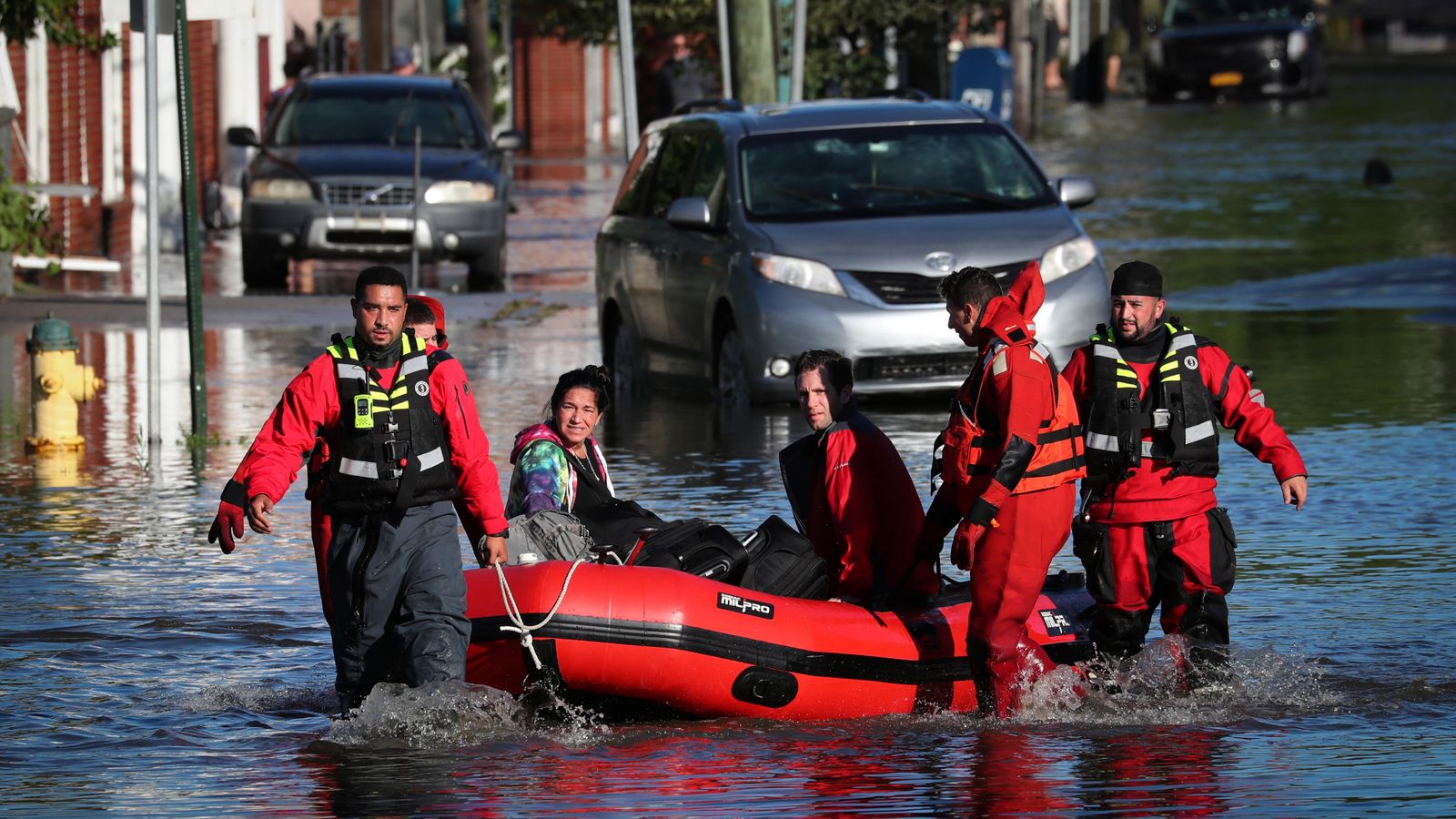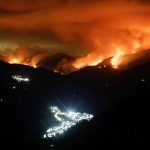The strange thing about these “weather events” as they are now so often referred to, is that you can drive through a place said to have been hit hard and not immediately notice the damage.
But the power of Mother Nature can be so random and cruelly selective.
You turn a corner and it’s in front of you – communities ripped apart.
At first glance Elizabeth, New Jersey, looks fine. But focus for a second and you notice the cars parked along the gridded streets of this community have all been shunted out of place.
They all have muddy watermarks halfway up their windows. Inside, their footwells and cup holders are full of water.
Just hours earlier, torrents of water had turned these streets into rivers. Every house on every street within several blocks of the river is damaged.
We watch a long line of people waiting to find some temporary housing. As we chat to some of them, news emerges that at least four people had died in this community.
A woman approaches us. “Will someone please help me,” she says, before wandering on in a daze.
Down the road, another resident, Robert, tells us how a neighbour had alerted him to the flooding in the middle of the night. It had come so fast, he hadn’t noticed. Within minutes the basement was full of water.
A forty-minute drive southwest is Manville. On a bridge that’s now sitting on the water it is supposed to stretch over, scores of people have gathered. They are from the community beyond but are now cut off from their homes.
We meet Melissa Castro. Her grandmother lives beyond the water. Alicia Castro is 66 and stuck.
Melissa is on the phone to her but can’t reach her. “She’s cold,” Melissa tells me, translating her grandmother’s native Spanish. She sobs.
Please use Chrome browser for a more accessible video player
“I heard people were getting out in rafts. But she is an elder person. She didn’t manage to get out… I am very worried. It’s horrible,” Ms Castro says.
The emergency services are aware of their situation. Both grandmother and granddaughter will probably be reunited soon. But all this is still hard and overwhelming.
The Raritan River, which passes through Manville, has burst its banks at points along its course. It is one of three in the state which is overwhelmed.
Please use Chrome browser for a more accessible video player
Locals here have experienced this before, and yet federal flood protection measures over the years and buyouts of vulnerable land have failed to protect the community against the volume and the regularity of it all.
Across several states, emergency services have been stretched to their limits, rescuing people who had retreated upstairs. The top floors of many homes were the only safe place.
For some the safety of a top floor didn’t exist. At least ten of those who died in New York, where the National Weather Service declared the city’s first-ever flash flood emergency, were in basement apartments. It is those on the lowest incomes who are always more impacted by all this.
And this wasn’t just rainfall. Even having travelled north across America, Ida was still producing winds strong enough to rip roofs clean off.
In Hillsborough, to the southwest of New York City, aerial images showed houses flattened.
Subscribe to ClimateCast on Spotify, Apple Podcasts, or Spreaker.
The sun is shining now across the east coast; the storm has swept out into the Atlantic. But the damage to homes and to infrastructure will take considerable time to fix.
The really striking thing is that across the northeast of the country, more than a thousand miles from where Ida made landfall as a hurricane in the Deep South, the impact here is as bad; in places, worse.
And the loss of life has been greater. The tail of this storm has been worse than its eye.






















